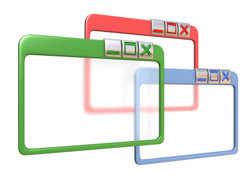 Social networking sites are the phenomenon of the moment. Meet someone new and you look them up on Facebook.
Social networking sites are the phenomenon of the moment. Meet someone new and you look them up on Facebook.
Find you are interested in what they have to say, and you follow them on Twitter. Put these sites on your iPhone or Blackberry and you can access them anywhere, anytime.
Social networking is just one example of interaction through the web – or what is often dubbed Web 2.0. And this is having a big impact on organisations, not least the NHS.
On a national level, NHS Choices provides a symptom checking, digital advice and hospital comparison service to millions of users. On a more local scale, NHS North West is developing a set of Web 2.0 tools with input from local healthcare professionals and patients that will be marketed to the wider NHS.
Finding good ideas
Elaine Darbyshire, director of strategic communications, tells E-Health Insider: “When I first joined the NHS, I was surprised at how little web 2.0 development work was being done.
“We began looking at what was out there. The US, in particular, has put a lot of focus on health 2.0, but rather than duplicate work that’s been done, we wanted to do something new.”
The aim of NHS North West’s Web 2.0 Accelerator Programme is to quickly identify, prototype, build and introduce a suite of low cost web tools and services that improve NHS efficiency and value.
It has run eight brainstorming workshops and invited clinicians and managers to contribute ideas. “We came back with around 260-270 solid ideas and realised that we were only scratching the surface,” says Darbyshire. “There was a huge amount of enthusiasm.”
The leaders of the programme, who include trust chief executives, took the ideas and filtered them down to what would suit most people’s needs. Twenty ideas are now being prototyped covering five areas; innovation, community, engagement, wellness/prevention and productivity.
“We can tell that from the sheer volume from ideas generated there is huge potential and clinicians see to be the first to want to get involved,” Darbyshire says.
Getting prototypes in place
Prototypes already include:
- Peter Piper- a searchable database of hundreds of short, self-care videos featuring local patients that offer practical tips and advice;
- The Together We Can – a community site for 220,000 NHS staff in the North West to propose, comment and vote on ideas for saving money; and
- Helping Hands – a diary app to help housebound people and their carers co-ordinate practical help from private network of family and friends.
NHS North West and Health2Works, a company that specifically designs web-based services for the NHS, have also launched a new website that allows interested parties to contribute their ideas and comment on the prototypes online.
One commenter said “I saw the speech therapy idea. Why not include Skype 1-1 tuition sessions. Low cost – saves travelling – uses technology creatively.”
The project is being funded by NHS North West’s Innovation Fund, which is set centrally to encourage innovation in the health service.
Those involved say that time is ripe to take advantage of the temporary availability of talented independent web developers that are on the market as a result of financial upheaval in the financial services sector.
Darbyshire adds: “The budget for this was £200,000, which was the seed corn money but we’ve managed to do it with less than £150,000 and that’s starting from a completely blank sheet.”
Following the prototyping stage, the tools and online services developed by the accelerator initiatives will be owned by a new community interest company, which the NHS will guarantee to offer at ‘cost/access’ use to any local NHS organisation.
Darbyshire says: “Of course, the natural progression would be to build a business case. There’s an overwhelming desire for these tools and lots of NHS employees in the North West already use similar things in their personal life.
“We will get the past the beta stage then have them commissioned by primary care trusts, so that we move into a self financing position.
“We can then potentially take the model outside of the region or even overseas. But the money will go back into the top end; real focus on value for money, a sustainable business model, keeping the IP and generating a return.”
Regional action
While Darbyshire praises trusts that are now providing applications for their staff and patients, she argues that this is a first of a kind approach in designing apps that could have real benefits for an entire region.
“I know that West Midlands strategic health authority is developing a regional web portal, but ours is much more from the bottom up, where as theirs is a one stop shop,” she adds.
“We are the first in the UK to be doing this from an application perspective. We’re not doing major development; our approach is to use these apps to provide something effective for as many people as possible.” The programme expects to have tools ready for use in the wider NHS within the next year.
